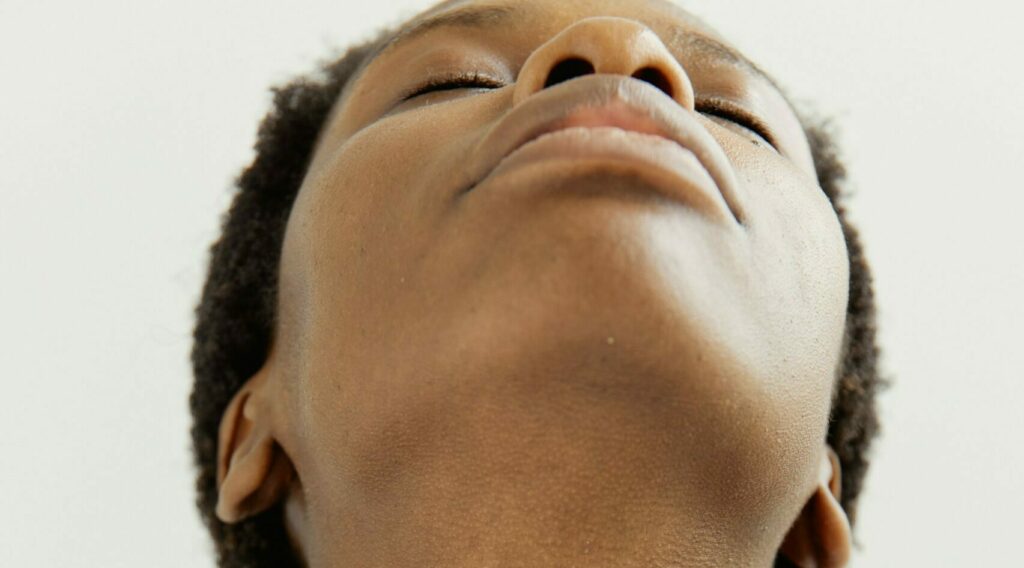Menopause and your skin

Ageing skin is a reality of life, we all know we won’t always have the skin of a 20 year old. What we don’t all know is that skin ages more rapidly through perimenopause and menopause.
Let’s take a step back to understand what happens to our skin as it ages.
The appearance of the face and neck (and, to be fair, the skin over our entire body) changes with age as a result of the loss of muscle tone and thinning skin which can give a drooping appearance and create wrinkles. The skin dries out thanks to reduced oil produced by the sebaceous glands and the underlying layer of fat shrinks so that the face no longer has a plump, smooth surface. The number and size of blotches and dark spots on the face can increase as well.
Changes in the connective tissue reduce the skin's strength and elasticity. This is known as elastosis and it produces that leathery, weather-beaten appearance. The blood vessels of the dermis become more fragile which leads to bruising and bleeding under the skin (often called senile purpura).
But why the acceleration in skin ageing through menopause? A key factor is the loss in collagen - studies show that women’s skin loses about 30% of its collagen during the first five years of menopause. Collagen is the protein which gives skin its strength and flexibility while another protein, elastin, gives skin its elasticity. A loss in collagen is driven by lower levels of oestrogen. Oestrogen supports collagen production by binding to receptors in the skin known as fibroblasts.
There are, of course, other factors at play such as sun exposure, cigarette smoking, your genetic make-up, nutrition and environmental factors such as pollution but, through menopause, the critical driver is the decline in collagen.
What’s particularly tricky in terms of looking after the skin through menopause is that the hormonal imbalance means there can be more than one issue and they can seem contradictory. For example, it’s not uncommon for women to, alongside dry skin, experience breakouts and acne or a worsening in psoriasis.
Through my clinic, I have seen a significant increase in the number of menopausal women booking a consultation to discuss changes to their skin. They are keen to understand how to address these changes to look the best they can and to boost their self-confidence and self-esteem.
There are a number of possible treatment options.
Let’s start with skincare.
Your skincare regime should include products that contain retinoids as these increase cell turnover. Every cell in your body has a life cycle, and in the case of adult skin cells, that cycle lasts about 28 days. Retinoids promote cell turnover which means the old cells on the surface, which can make the skin look dull, are replaced with younger, plumper cells from below.
A good hydrating moisturiser is also key – choose one with antioxidants to also help with the collagen remodelling process and an SPF30 (even in the winter). Also look for products that contain hyaluronic acid, squalene, lipids, and ceramides.
Use a mild and gentle cleanser, as some soaps can dry out the skin further and a gentle cleanser will not strip the dry skin of its essential oils.
Good nutrition is also important. Avoid processed foods high in refined sugar and focus on whole foods, loaded with nutrients. Stay hydrated and minimise alcohol – both of these will help prevent a puffy face and dull complexion.
Regarding aesthetic treatment options, there are a few things that work extremely effectively.
Firstly, skin boosters, also known as hydrating and remodelling injections, can be injected just under the skin over the face and neck, and consist of vitamins, hyaluronic acid, antioxidants, amino acids, and minerals. The purpose of these is to hydrate the skin, boost collagen and elastin production, and improve the elasticity and fine lines. They have become one of the most popular injectable treatments that we offer, and that trend has really come about in the last couple of years.
Botox can often be very effective for wrinkles around the forehead, frown lines, and crow’s feet area, and can lead to a very natural and refreshed look when done by a highly experienced provider who is very knowledgeable with facial anatomy. I use a ‘Baby Botox’ approach, which means smaller doses are administered and more evenly spread out, which leads to much more natural-looking results.
In summary, whether its dryness of the skin, dullness of the skin, fine lines and wrinkles, an increase in breakouts, or sagging of the facial tissues, there are many non-surgical treatment options available. They can help your skin look its best and dramatically increase confidence.
My advice would be to book a consultation to discuss a personalised regimen tailored to your skin. The skincare world can be tricky to navigate and it is advisable to choose science-backed products which will lead to amazing results and that can be adapted as your skin and face changes.

Stay up to date with the latest menopause news by signing up to our mailing list
Newsletter Sign-up (popup)
Stay up to date with the latest menopause news